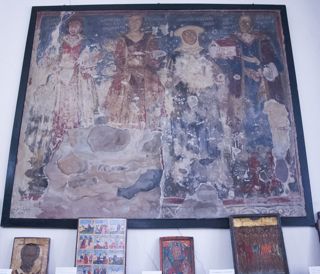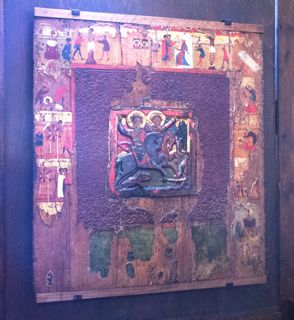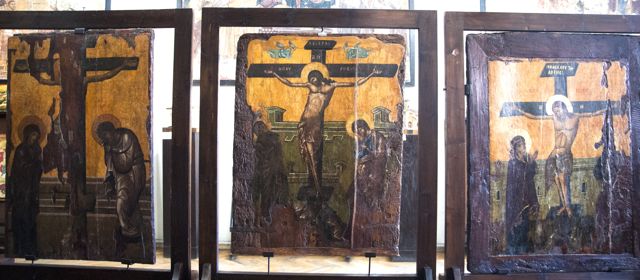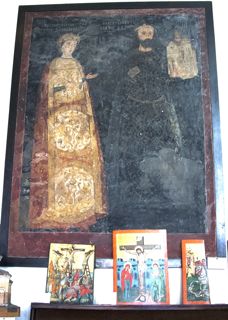Pictures - Polina Spartyanova
Polina Spartyanova
The National Church Museum of History and Archaeology of the Holy Synod of the Bulgarian Orthodox Church is one of the least popular museums in Sofia. Although it is included in the 100 national historic sites of the Bulgarian Tourist Union, the museum enjoys far less visitors compared, for example, to the crypt of “Alexander Nevsky” church.

Immediately after the liberation of Bulgaria from Ottoman rule the Holy Synod of the Bulgarian Orthodox Church started collecting valuable icons and religious objects from certain places within the Third Bulgarian State, which could not be taken care of properly or were in need of restoration. After many years of collecting and restoration of exhibits, the museum was opened in the building of the Theological Faculty of Sofia University "St. Kliment Ohridski" in 1923, where it is housed today.
Currently, the museum houses more than ten thousand manuscripts and incunabula, old and valuable icons, rods, throne crosses, carvings and many other religious items. The iconographic department of the museum displays icons from the Middle Ages, the Second Bulgarian Empire, the period of Ottoman rule and the Renaissance. Georgi Mihov, one of the curators of the museum, complained that the National Church Museum of History and Archaeology has an exhibition area of only 470 m2 and that is why the most valuable pieces of its collection cannot be put on shoe. He hopes that the new Bulgarian Patriarch Neophyte will support the realization of the project for the expansion of the museum in the building of the Faculty of Theology.

In general, the historical church and archaeological heritage of Bulgaria is scattered throughout its territory, but the National Church Museum of History and Archaeology of the Holy Synod stores the most valuable exhibits which are also at the greatest risk of theft and negligence. The museum has the largest collection of icons in Bulgaria and it includes the oldest Bulgarian icon of St. George and St. Demetrius on horseback, which dates from the 10th- 11th century and was found in one of the oldest Bulgarian towns - Sozopol. Many of the icons in the museum are rare examples of Old Bulgarian art and feature some new iconographic contributions and highly artistic offerings. These include several two-sided icons which are painted on both sides and are believed to have been used in liturgies in the 13th century. The Virgin Mary with the infant is depicted on one side, and on the other - the crucifixion of Jesus Christ.

Copies of paintings from Bulgarian churches and monasteries, which initiated the Renaissance in Bulgaria after 126, can also be seen at the National Church Museum of History and Archaeology of the Holy Synod. The copies were made and are displayed in the museum in order to acquaint visitors with the art of the most significant Bulgarian monasteries, since not everyone would have the opportunity to tour them all. The National Church Museum of History and Archaeology has a series of copies of portraits of Bulgarian church-donors to Athos monasteries accurately painted mostly by Nikolay Rostovtsev. The exposition of the museum includes replicas of famous ancient churches in Sofia, Nessebar, Zemen and many others, made by sculptor Buchinski.
The National Church Museum of History and Archaeology of the Holy Synod cannot be compared to the not so modest exposition of the Bulgarian church heritage at the National History Museum. The rich

collection of the History Museum was collected and confiscated over the years by government authorities at the borders of the country. When customs officers confiscate illegally acquired church property with historic value at the Bulgarian border, the state automatically sends the new exhibits to the History Museum and does not even consult the actual owner of the relics – the Bulgarian Orthodox Church. In most cases, the stolen church items which were about to be sold abroad, are property of Orthodox churches from various locations in Bulgaria, which never find out what the fate of their possession is. This problem is one of many that testify to the deepening conflict zones between the Patriarchate and the Bulgarian state and no one can predict their impact on the cultural heritage of Bulgaria and its people.